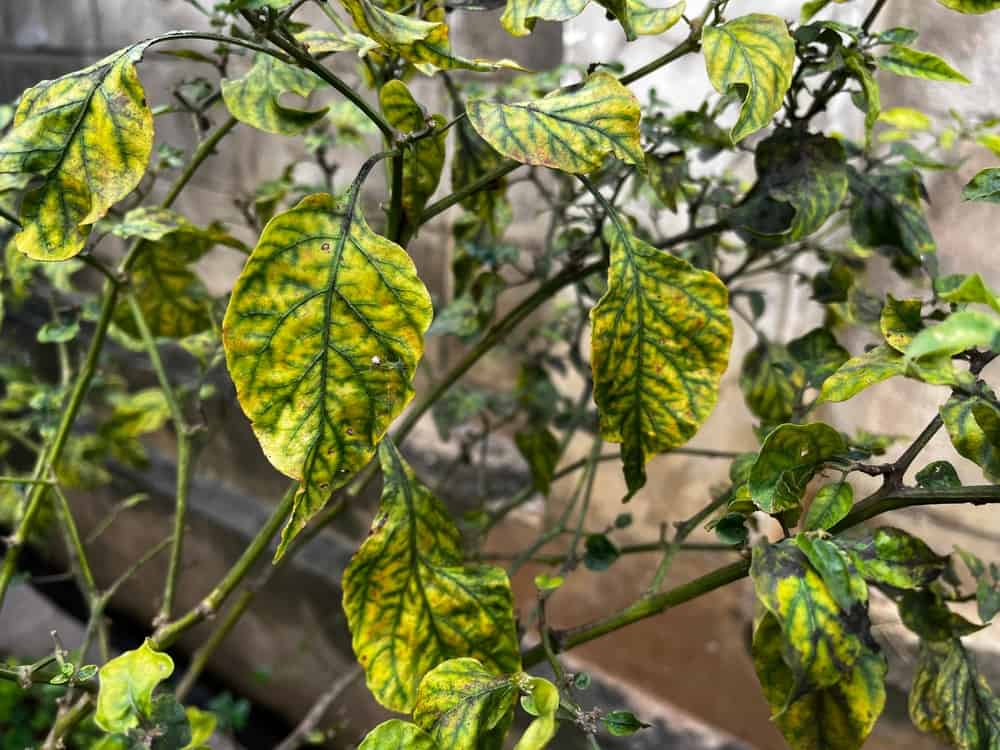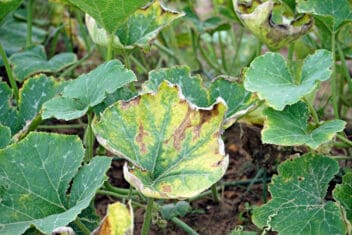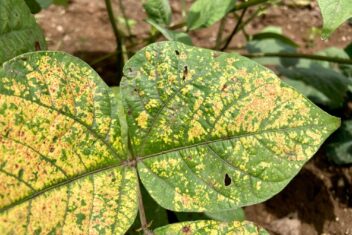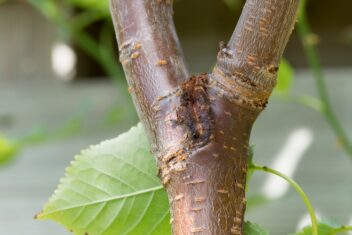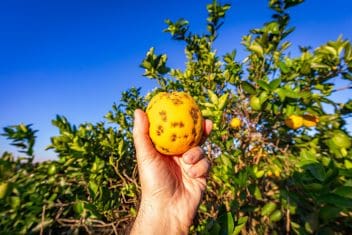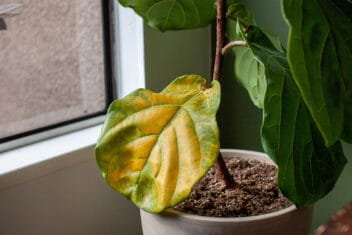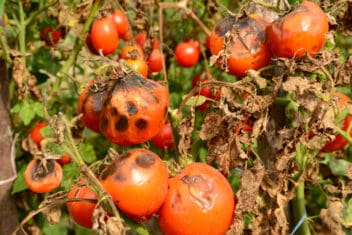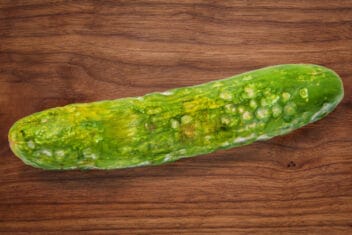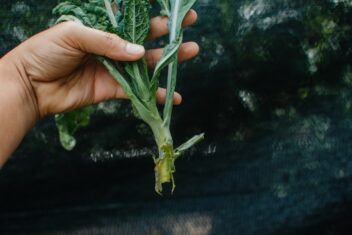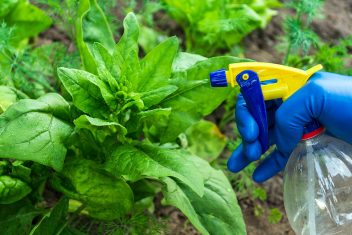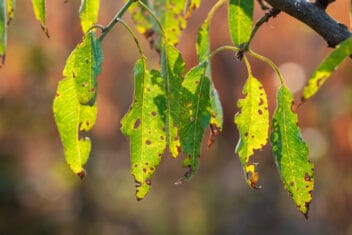Do any of your food plants look as though their tops are shriveled and sad? Then you may be dealing with curly top virus. Although we often find it in tomato plants, it can affect hundreds of different species.
Management is difficult, so this is a disease you really don’t want to deal with.
Here’s how to identify it, and what to do if and when it appears in your garden.
What is Curly Top Virus, Exactly?
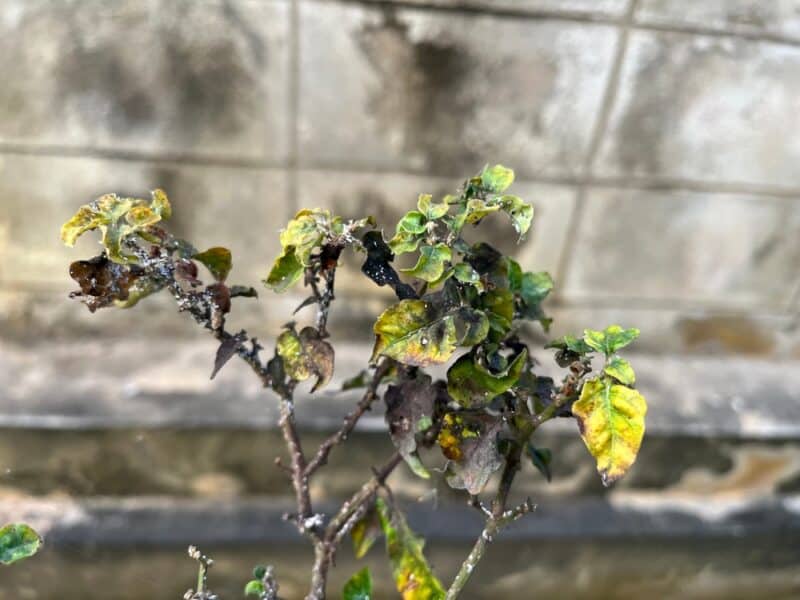
Curly top is caused by a virus genus called Curtovirus, from the Geminiviridae family. These viruses are generally spread by leafhopper insects, particularly the beet leafhopper (Circulifer tenellus).
Yes, these little jerks infect so many beetroot plants that they’re actually associated with that particular species.
That said, curly top virus isn’t limited to beets. As mentioned earlier, it hits tomato plants quite fiercely but also affects both sweet and hot peppers, spinach, beans, peas, cucumbers, squashes, melons, and roots vegetables such as radishes, horseradish, turnips, and rutabagas.
It first manifests as discolored, yellowish, and speckled top leaves on your plants. As these plants mature, their growth form will be stunted: they’ll often bush out instead of growing tall. Then, as indicated by the virus’ name, those top leaves will curl into shriveled, fist-like shapes.
How To Treat It
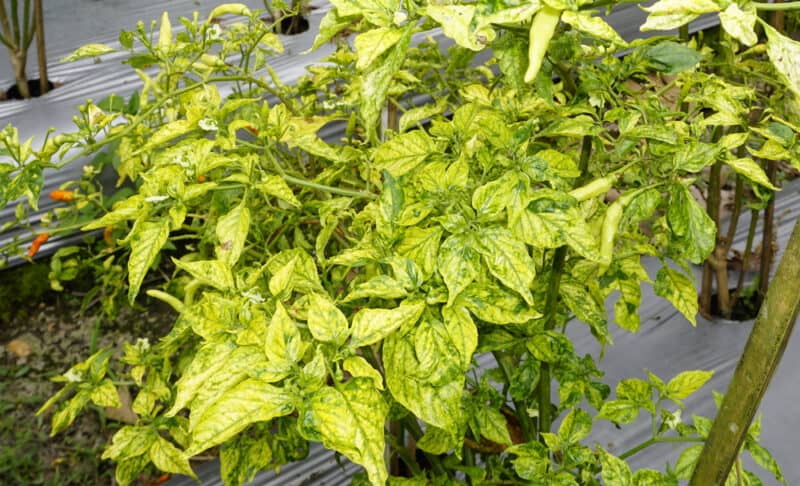
There is no treatment for curly top virus, so your only bet is preventive measures.
For one, leafhoppers prefer to overwinter in Russian thistles and mustard plants. If those aren’t available, they’ll nestle down into whatever thistles and cruciferous plants are available.
These may include milk thistle, blessed thistle, wild garlic mustard, or old Brussels sprouts canes, to name a few.
Once the growing season has finished, be sure to clear your garden out thoroughly. “Take down” the garden by pulling up or cutting down whatever plant matter still remains. Then rake everything well, turn over the soil, and lay down amendments or green manure as needed.
This will eliminate the leafhoppers’ preferred nesting sites, and they’ll likely mosey on elsewhere.
Plant Strategically

Leafhoppers love to feed in full sunshine and thus avoid plants cultivated in shadier spots. This isn’t ideal for fruiting plants such as tomatoes and peppers, since they require several hours of direct sunlight, but it can work for shade-tolerant plants such as peas, beetroot, and leafy greens.
Aim to keep your soil at a pH of 5.5-6.5, don’t add too much nitrogen, and ensure your plants are watered well. Periods of dehydration can make them more susceptible to damage from curly top virus.
Choose Resistant Plants
Additionally, try to choose plants that are resistant to the disease. Always buy seeds and seedlings from reputable growers, and if you’re buying seedlings, examine their leafy tops well. Should you see any signs of curling, please don’t buy them.
The same goes for if you get grafts or cuttings from friends or family members. Inspect the parent plant thoroughly before taking any cuttings, and if you see any signs of potential curly top virus infection, don’t take anything from that plant!
The virus will likely have spread throughout the entire plant by that point, and anything you grow will also be affected.
Use Protection
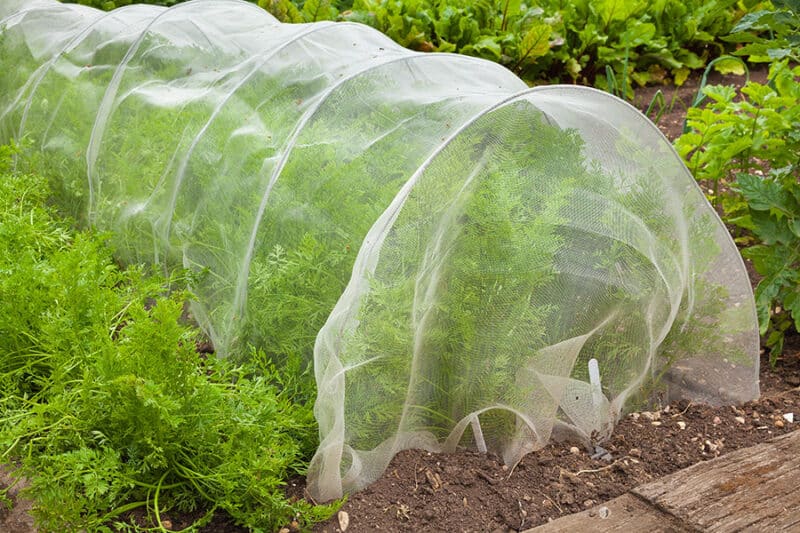
Do you know that fine mesh people use in floating row covers to protect brassicas or fruit bushes? It’s also remarkably effective for protecting against leafhoppers. Your plants can’t be infected with curly top virus if the insects responsible for spreading them can’t get anywhere near them!
Also, avoid growing beets (especially sugar beets!) or mustard near your other plants. These are leafhoppers’ favorites, and they’ll congregate on these plants before annihilating everything else nearby.
Be Ruthless
If and when you do find plants that are affected by curly top virus, be ruthless with them.
Even if leafhoppers aren’t currently on those plants, they may have lain eggs on the leaves. As such, be sure to pull up all of these plants and burn them. Don’t simply compost or bury them: the eggs will still hatch and offer up a new generation of leafhoppers to make your life a living hell.
Once that’s done, clear any debris off the surrounding soil, and turn everything over. Then, rotate crops so you don’t grow anything susceptible to curly top there for two to three years.
Good options for planting in that place would be perennial vegetables such as asparagus and Jerusalem artichokes. Additionally, do some companion planting with yarrow, dill, and flowering chives: they attract lacewings, which feed on leafhoppers and will bring their populations down.
There will always be challenges in growing food, and curly top virus is no exception. Fortunately, by following these tips and being diligent about prevention, you should be able to mitigate potential disaster. Good luck!
